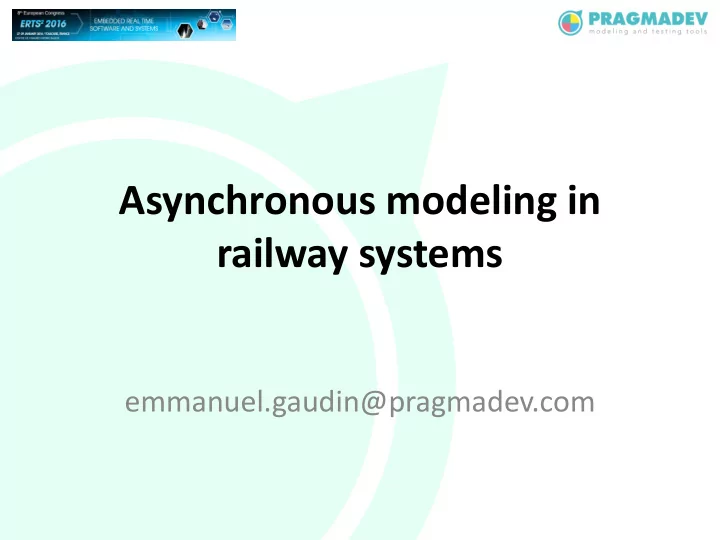

Asynchronous modeling in railway systems emmanuel.gaudin@pragmadev.com
Different types of models Models are targeting a specific goal: • Requirements • Architecture • Specification • Property verification • Design
Different modeling technologies • SysML Requirements • AADL Architecture • ASN.1 Interfaces Precision • SDL Functional behavior • Matlab Control laws • Lustre Logical control • B Mathematical predicates
Basic train systems • Mainly binary information • Logical operation Needle position depending on train presence Open door if facing a platform
Upcoming systems ERTMS: European Rail Traffic Management System deals with: • Speed • Acceleration • Communication
Needs • Higher abstraction models • Asynchronous high level representation • Synchronous locally (GALS)
Solution SDL models Asynchronous semantic of execution Executable => verifiable Specification and Use SDL to describe the overall Description Language behavior is an ITU-T recommendation How does it relate to a local synchronous approach ?
Experiment Radio Block Center from ERTMS recommendation • Matlab model with synchronous state machines • Translated to an SDL model with asynchronous state machines
Architecture Synchronous port: logic based Asynchronous port: message based
Behavior
Inputs Model simulator showed the behavior was equivalent.
Mapping the semantic Sensors are evaluated on a clock base, mapping of synchronous reading to asynchronous information is straight forward. Outputs might be sent to synchronous based designs, mapping of asynchronous information to synchronous signals is also straight forward.
Conclusion The usual synchronous approach can be replaced by an asynchronous one: • Resulting models are functionally equivalents. Asynchronous pros: • Closer to the requirements. • Easier to read. • Handles large and complex systems. Asynchronous cons: • Difficult to verify but possible on a limited space. • Not part of the cultural background.
Recommend
More recommend